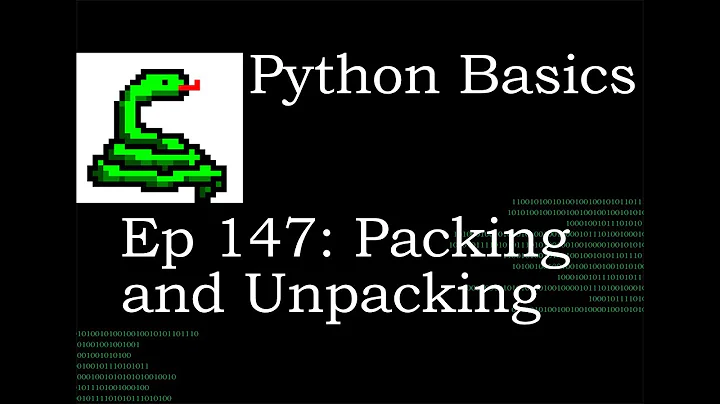Python struct.pack and unpack
Solution 1
struct.pack takes non-byte values (e.g. integers, strings, etc.) and converts them to bytes. And conversely, struct.unpack takes bytes and converts them to their 'higher-order' equivalents.
For example:
>>> from struct import pack, unpack
>>> packed = pack('hhl', 1, 2, 3)
>>> packed
b'\x00\x01\x00\x02\x00\x00\x00\x03'
>>> unpacked = unpack('hhl', packed)
>>> unpacked
(1, 2, 3)
So in your instance, you have little-endian unsigned integers (elements many of them). You can unpack them using the same structure string (the '<' + 'I' * elements part) - e.g. struct.unpack('<' + 'I' * elements, value).
Example from: https://docs.python.org/3/library/struct.html
Solution 2
Looking at the documentation: https://docs.python.org/3/library/struct.html
obj = struct.pack("<"+"I"*elements, *self.buf[:elements])
struct.unpack("<"+"I"*elements, obj)
Does this work for you?
Related videos on Youtube
Marcus F
Updated on June 04, 2022Comments
-
Marcus F almost 2 years
Im in no way an experienced python programmer,thats why i believe there may be an obvious answer to this but i just can't wrap my head around the struct.pack and unpack. i have the following code:
struct.pack("<"+"I"*elements, *self.buf[:elements])I want to reverse the the packing of this, however im not sure how, i know that "<" means little endian and "I" is unsigned int and thats about it, im not sure how to use struct.unpack to reverse the packing.
-
 Collin Heist over 3 yearsIf you want to reverse the packing, why don't you just not pack the elements in the first place?
Collin Heist over 3 yearsIf you want to reverse the packing, why don't you just not pack the elements in the first place? -
Marcus F over 3 yearsah yes, it's because i have data that needs to be interpreted by a receiver as bytes, however the receiver also responds with bytes packed in the same way
-
-
Marcus F over 3 yearshow would one calculate the elements without knowing them=
-
 Collin Heist over 3 years@EmilB, unless you know how the binary data is packaged, there is no way to infer the data types used to encode it. Think, if I were to give you any arbitrary bytes, you'd have no way of knowing what data that encodes. In your case, since you are both sender and receiver, this is a non-issue. But in general encoding to bytes (without some agreed upon structure) is hard to 'undo'.
Collin Heist over 3 years@EmilB, unless you know how the binary data is packaged, there is no way to infer the data types used to encode it. Think, if I were to give you any arbitrary bytes, you'd have no way of knowing what data that encodes. In your case, since you are both sender and receiver, this is a non-issue. But in general encoding to bytes (without some agreed upon structure) is hard to 'undo'.





